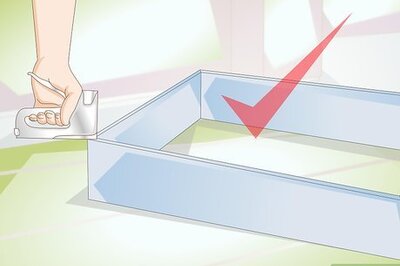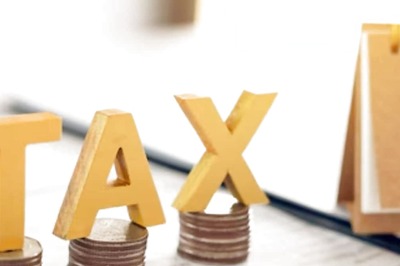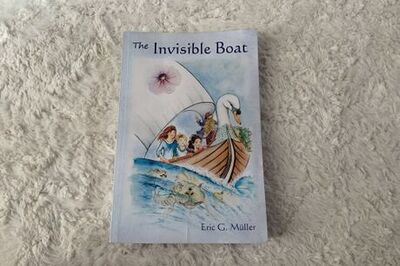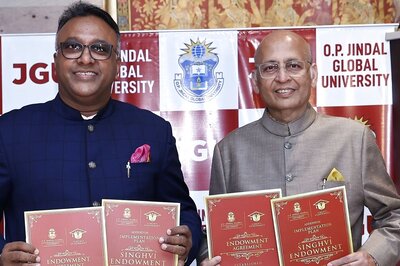
views
The Elder Futhark Runes & Their Meanings
Fehu (“Cattle”) Fehu is a powerful symbol of abundance and wealth and represents the ancient Norse people’s most important source of material wealth, cattle. Overall, it symbolizes prosperity and success in all your ambitions. It also represents power, since wealth and power are often connected. Fehu warns that wealth and power can bring joy and success, but greed and worry will befall those who don’t share with others. Phonetic value: F Pronunciation: FAY-hoo Meaning keywords: Cattle, wealth, power, prosperity
Uruz (“Wild ox”) Uruz symbolizes wild bulls or aurochs and their intense energy, stamina, and willpower to overcome obstacles. This force can be used for good or bad—it’s chaotic by nature, but contains great potential that can be unlocked with self-discipline and focus. Uruz is also a powerful force for manifesting your desires. Phonetic value: U Pronunciation: OO-rooz Meaning keywords: Aurochs, strength, energy, physical power
Thurisaz (“Giant”) Thurisaz is a powerful symbol representing the thorn—a stinging, painful energy that might block you from your goals but can also help you protect what’s most important to you, depending on how you channel your energy. It’s also associated with the giant Thurs (Thurisaz means “giant” in Old English) or the well-known Norse god Thor and his hammer, Mjolnir, depending on your interpretation. Phonetic value: Th Pronunciation: THUR-ee-sahz Meaning keywords: Giants, thorn, defensive energy, disruption
Ansuz (“God”) Ansuz is the rune of communication and is linked to the Norse god Odin. It represents two important gifts given to humankind by the gods: önd (“the breath of life”) and ódhr (“the power of thought”) It’s a reminder to think before you speak and recognize that your words have power. Phonetic value: A Pronunciation: AHN-sooz Meaning keywords: Mouth, breathe, speech, connection to the divine
Raidho (“Journey”) Raidho translates to “journey” or “wagon” and symbolizes forward movement after a dark challenge or spiritual awakening. While it may represent travel literally, it also encourages you to be intentional with your choices as you journey forward through life. Phonetic value: R Pronunciation: Rah-EED-ho Meaning keywords: Wagon, journey, determination, momentum
Kenaz (“Torch”) Literally meaning “torch” or “light,” Kenaz symbolizes the inner light or higher purpose that drives you forward. This inner light may guide you toward personal realizations or insights or be the first step toward manifesting your desires into existence. Without Kenaz’s energy, you may feel lost or directionless. Phonetic value: C or K Pronunciation: KEN-ahz Meaning keywords: Passion, creation, torch, guiding light
Gebo (“Gift”) Gebo radiates with gratitude. The rune’s two crossing arms symbolize an exchange of gifts and a momentary union. It’s a reminder that expressing gratitude attracts more generosity into your life and that every interaction involves an exchange of energy. When Gebo appears in a rune casting, it may mean that there is a spiritual or energetic imbalance in your life. Phonetic value: G Pronunciation: GEHB-oh Meaning keywords: Gratitude, sacrifice or offering, exchanging gifts
Wunjo (“Joy”) This rune symbolizes both the feeling of joy as well as all the small moments of happiness, satisfaction, or fulfillment that bring joy to you. It’s a reminder that true happiness comes from within and manifests in the little things (not just momentous victories and lavish gifts). Phonetic value: W Pronunciation: WOON-yo Meaning keywords: Joy, harmony, fulfillment, alignment
Hagalaz (“Hail”) Hagalaz represents disruption and teaches you that it’s a natural part of life that can lead to personal growth. Instead of rushing forward when you’re faced with a lack of progress, this rune encourages you to pause and reflect on the best strategy. Hagalaz is also a reminder that disruptions are temporary, but are a valuable break from the routine. Phonetic value: H Pronunciation: HA-gah-lahz Meaning keywords: Hail, delay, pause, obstructing progress
Naudhiz (“Need”) Naudihiz is an invitation to confront your problems head-on instead of avoiding them. It inspires you with the courage to face your fears while also showing you the urgency of your circumstances. Facing your innermost problems and turmoil is a crucial step toward making your dreams come true. Phonetic value: N Pronunciation: NOWD-heez Meaning keywords: Confrontation, need, overcoming challenges or distress
Isa (“Ice”) Icy Isa represents frozen stillness and barriers to progress or development. These barriers can be external obstacles or internal ones, like an unwillingness to get out of your comfort zone or to change your habits. Isa reminds you that clinging too hard to your old ways can prevent you from reaching your highest potential. Phonetic value: I Pronunciation: EE-sah Meaning keywords: Stillness, inertia, ice, freezing
Jera (“Harvest”) Jera celebrates harvest time and embodies the feeling of renewal that comes with the annual changing of the seasons. Like a true field harvest, Jera teaches you that ripe rewards come from hard, consistent work. You reap what you sow and have the power to initiate a spiritual new beginning. Phonetic value: J/Y Pronunciation: YARE-ah Meaning keywords: Harvest, renewal, the turning of a cycle, rewards for hard work
Eihwaz (“Yew”) Eihwaz is the word for “ash tree” or “yew tree” but also refers specifically to Yggdrasil, the tree of life in Norse mythology. The symbolism of Yggdrasil is complex—it represents all worlds of the cosmos coming together and means death in some cultures, but it can also represent the passing of outdated beliefs and the growth, healing, and knowledge that follows. Phonetic value: E/I Pronunciation: AY-wahz Meaning keywords: Wisdom, transitions, passing through gateways, yew, death
Perthro (“Dice cup”) Pertho encompasses destiny or your life path and reminds you that your life is not predetermined. Your choices impact your future, and you have the power to stay on the path you’ve set for yourself or to go off course. All actions have consequences, and Pertho encourages you to remember that your future is yours to create. Phonetic value: P Pronunciation: PER-thro Meaning keywords: Divination, fate, consequence, casting lots
Algiz (“Elk”) Like the elk it’s named after, Algiz radiates protective, defensive energy. It encourages vigilance through raising your consciousness and perceiving any dangers that lurk around you (material or emotional). Higher knowledge and safety are this rune’s priorities, and it reminds you to be prepared for any obstacle that you may face (including asking for help when you need it). Phonetic value: Z Pronunciation: AL-geez Meaning keywords: Luck, higher knowledge, sanctuary, elk
Sowilo (“Sun”) Sowilo is a powerful and complex rune. It symbolizes hope, progress, and the victory of light over darkness while also serving as a guiding light that illuminates your innermost self and ushers you towards your highest potential. Sowilo gives you the energy to pursue your goals and design your dream reality. It may also predict a new, bright beginning after a period of dark and struggle. Phonetic value: S Pronunciation: So-WEE-lo Meaning keywords: The sun, success, willpower, growth and expansion
Tiwaz (“Tyr”) Associated with the Norse god of war and the sky, Tyr, Tiwas exudes strength and courage. According to myth, Tyr bravely lost his hand in a battle with the great wolf Fenrir to save the Aesir (Norse gods). The story is a reminder to face opposition with resolution, courage, and sacrifice. Phonetic value: T Pronunciation: TEE-wahz Meaning keywords: Tyr, courage, sacrifice, honorable action
Berkano (“Birch”) This rune is associated with the birch goddess Berkano and represents the gentle transformations from birth to growth to death. Each phase is a reminder that every end leads to a new beginning and to nurture your personal growth. That way, you’re prepared to embrace any change that comes your way and thrive. Phonetic value: B Pronunciation: BER-kah-no Meaning keywords: Birch, transitions, new phases, growth
Ehwaz (“Horse”) Like a horse and its rider, Ehwaz represents the power of working together to achieve a goal. Trust, loyalty, and a shared purpose are all necessary for any group or partnership to make progress, and when two forces combine, they can reach greater heights than they could alone. Internally, Ehwaz means that the various forces within you must also be in balance and work together to get the results you want. Phonetic value: E/I Pronunciation: EH-wahz Meaning keywords: Horses, forward progress, harmonious partnerships, trust
Mannaz (“Man”) Mannaz is the link between the physical and spiritual worlds and symbolizes humankind’s highest potential. It embodies self-improvement, a balanced life, and the search for a meaningful purpose. Spiritually, it’s the drive to become better, do better, and find harmony within yourself by striving to accomplish something beyond the ordinary. Phonetic value: M Pronunciation: MAN-nahz Meaning keywords: Man, purpose, highest potential, self-improvement
Laguz (“Water”) Representing the power of water, Laguz symbolizes the perpetual flow of energy through the world and through every person. The ebb and flow of your emotions and the depth of your inner self are contained in the way water nourishes, heals, and restores. When your energy flows uninhibited, you can accomplish any of your goals. Phonetic value: L Pronunciation: LAH-gooz Meaning keywords: Water, your deepest self, emotions, ebb and flow
Ingwaz (“Ing”) Associated with the Norse god of fertility and agriculture, Ing, this rune encompasses fertility, sexuality, and the entryway into home. It vibrates with potential energy, like a seed waiting to sprout—it teaches you that you need to be nurtured to grow to your full potential, and also that good things can’t be rushed. Phonetic value: Ng Pronunciation: ING-wahz Meaning keywords: Fertility, the seed, family, potential for growth
Dagaz (“Day”) Representing dawn and daybreak, Dagaz marks the end of one cycle and the beginning of the next. It’s a moment where day and night briefly meet and balance each other, creating an energy of immense potential. More broadly, Dagaz symbolizes change and the higher spiritual awareness that comes with transformation. Phonetic value: D Pronunciation: DAH-gahz Meaning keywords: Day, the light of the gods, creative potential, enlightenment, clarity
Othala (“Home”) Othala is the connection to your past and your “home” in the familial sense—it’s a part of who you are. It symbolizes a sense of community and belonging and reminds you that your strength and love are the legacy that will be remembered by future generations. Broadly, Othala is a symbol of our shared journey as humans. Phonetic value: O Pronunciation: OH-thah-lah Meaning keywords: Legacy, community, belonging, ancestral property
Reading Runes
Runic inscriptions can be read from left to right or right to left. There was no standardization in how to write with runes until the Middle Ages, so there’s no single way to read them correctly. To figure out which way an inscription reads, find a non-symmetrical rune you recognize (like Fehu) and see which way it’s oriented to determine which way to read. Keep in mind that there is a lot of variation in how the runes are shaped and used between languages, regions, and time periods.
What is the Elder Futhark?
Elder Futhark is the oldest runic alphabet used by ancient Germanic and Norse peoples. This system of writing first appeared in Scandinavia around 160 CE and remained the dominant alphabet for Germanic-speaking peoples until about 700 CE, when the Younger Futhark alphabet became more prominent (these were the runes used during the Viking Age). The name “Futhark” comes from the first 6 runes of the alphabet (Fehu, Uruz, Thurisaz, Ansuz, Raidho, and Kenaz) and the sounds they make (F-U-Th-A-R-K). The runes’ angular shapes were designed to be inscribed easily into wood, metal, and stone for protection, spellcasting, and divination, as well as for practical communication. Each of the 24 runes in the Elder Futhark alphabet has a literal translation and phonetic sound and a deeper spiritual lesson or reminder. For example, Fehu literally means “cattle” and makes the “F” sound, but also represents material wealth and how it can impact your life. The word “rune” comes from the Old Norse word for “secret letter.” It was believed that each rune contained a hidden message or meaning and could be used to cast spells. The act of writing itself was considered magical or sacred.
The 24 runes are divided into 3 groups of 8 symbols called aettir. Aett is Old Norse for “family” or “generation,” and each aett (plural aettir) of the Elder Futhark is named for the Norse god or goddess that rules it: Fé (Freyja’s Aett) governs things that happen in the physical world, like prosperity, love, or war. It consists of the first 8 runes (Fehu, Uruz, Thurisaz, Ansuz, Raidho, Kenaz, Gebo, Wunjo) and is ruled by Freyja, the goddess of love, fertility, and war. Hagall (Heimdall’s Aett) represents change, the underworld, and the subconscious. It consists of the second set of 8 runes (Hagalaz, Naudhiz, Isa, Jera, Eihwaz, Perthro, Algiz, Sowilo) and is ruled by Heimdall, the Norse god responsible for guarding Asgard (the realm of the gods). Tyr (Tyr’s Aett) symbolizes spirituality, emotions, and how you interact with the world around you. It consists of the final 8 runes (Tiwaz, Berkano, Ehwaz, Mannaz, Laguz, Ingwaz, Dagaz, Othala) and is ruled by Tyr, the god of war, justice, and heroic actions.
History & Mythology of Elder Futhark Runes
In Norse mythology, the god Odin discovered rune knowledge and magic. According to legend, Odin (the Allfather) hung from the branches of Yggdrasil, the word tree, for 9 days and nights with no food or drink. During this time and thanks to his sacrifice, Odin gained knowledge of the runes and their meanings from Yggdrasil and passed the knowledge on to the vitki (a class of Norse sorcerers who practiced rune magic and divination). The runes gave the vitki and others the ability to cast spells and divine the future. Norse mythology is full of stories of people using runes for magical purposes. These stories also show how each rune is associated with a certain deity or energetic force.
The written Elder Futhark may have roots in ancient Greek or Italic scripts. It’s unclear exactly where this runic alphabet came from, but there are some clear influences from Greek and Roman letters. The most common theory suggests that the Greek script (which was not standardized between 700 and 400 BCE) may have reached Scandinavia and Germanic-speaking peoples via Eastern European tribes. The earliest confirmed runic inscription was found on a comb from Denmark (around 160 BCE) and reads harja (“comb” or “warrior”). The writing was so clear that experts think the script must have been in use for at least 100 years before that. The earliest runes have lots of variation, meaning they were used to write out a variety of Germanic languages and dialects (there is no single language that corresponds to the Elder Futhark).
By 500 CE, the Elder Futhark spread throughout the Germanic world. From the Nordic regions of Sweden, Norway, and Denmark, the Elder Futhark writing system traveled to England and other Viking outposts in Germany, Russia, Poland, Hungary, and even Asia Minor. As the runic alphabet spread, variations in its use, alphabetical order, and even the shapes of the symbols increased—there was no single, standard runic alphabet. At this time, the Elder Futhark was used to write down languages including Proto-Germanic, Proto-Norse, Proto-English, and Proto-High German.
Runes were used for magic and divination, as well as communication. Most of the runic inscriptions we know of today contain down-to-earth messages meant for everyday use, such as identifying tomb markers or creating warning signs in dangerous or spiritual places. However, runes were more highly valued for their magical properties. They could be carved into weapons or protective talismans to imbue them with defensive powers, cast as runestones to predict the future, and used to write out spells and curses or heal the sick. As runes evolved into the Middle Ages, they were used less for magic and more for practical communication.
After 700 CE, the Elder Futhark branched off into newer runic alphabets. As variations in the Elder Futhark became more pronounced, new alphabets emerged. The Younger Futhark was in use from about 700 to 1200 CE and was a condensed, simplified version of the Elder Futhark. Eight runes (Gebo, Wunjo, Eihwaz, Perthro, Ehwaz, Ingwaz, Dagaz, and Othala) were dropped from the alphabet and the remaining runes took on multiple possible sounds. The aett system stayed in place, but with 3 groups of 6, 6, and 4 runes. The Younger Futhark was the writing system used by the Vikings. The other major runic alphabet to emerge was the Anglo-Saxon Futhark. This alphabet began emerging in Britain and Frisia (the Netherlands) as early as the 5th century CE. Unlike the Younger Futhark, this system added runes (between 4 and 8 of them, depending on the region, language, or time period). These runes were primarily used to write Old English and Old Frisian until around 1000 CE. The Younger Futhark later developed into the Medieval Futhark in the 13th century CE. It was then that runes became standardized. Runes gradually faded away during the Middle Ages as Latin letters became more dominant, but were still used for ceremonial purposes, amulets, or personal letters.
Famous Rune Inscriptions Found in Excavations
Runic inscriptions have fascinated scholars and tourists for centuries. Only about 400 Elder Futhark inscriptions have been found and translated, although historians predict this is only a small fraction of what once existed. Most inscriptions are found on military equipment, coins, jewelry (bracelets, broches, combs), and runestones. Many of these runic carvings are damaged from wear and tear and are only partially legible. Here are some of the most noteworthy runic inscriptions (Elder and Younger Futhark) we know of so far: The Vimose inscriptions (Denmark, 160 CE): This collection includes the Vimose comb (the earliest datable Elder Futhark inscription) reading harja, as well as inscribed buckles, spearheads, sheathplates, and other military equipment. The Rakkestad inscription (Norway, c. 400 CE): This runestone predates the Viking Age by 400 years and is one of the few runic inscriptions found in Norway (the majority are concentrated in Sweden). The Stenkvista and Skåang runestones (Sweden, 6th century CE): The Stenkvista runestone is one of several stones referencing Thor and depicts his hammer, Mjolnir. The Skåang stone contains an Elder Futhark inscription from the 500s and a second, Younger Futhark inscription added during the Viking Age. The Rök runestone (Sweden, early 9th century CE): This 5-ton carved stone in rural Sweden contains over 700 runes carved into its 5 sides. The author was a man coping with the death of his son who also warned about extreme environmental challenges we know suspect occurred between 775 and 810 CE. The Jellings runestones (Denmark, 10th century CE): Two massive rune stones mark the graves of King Gorm the Old and his wife Thyra. They were erected by their son, Harald Bluetooth, and the inscriptions contain the first mention of Denmark as a country.
Using Runes for Magic
Draw runestones to divine the future. Draw or carve the Elder Futhark on small pieces of wood or stone and place them in a bag. Shake the bag while you focus on your question or concern about the future. Then, draw runes one at a time and lay them out in a rune spread. Similar to a tarot card reading, you can draw just one rune, lay out 3 to represent the past, present, and future, or use any other configuration you like. Using each rune’s meaning as a guide, interpret the answer to your question. For example, if you’re wondering if you’ll move soon and pull Dagaz, meaning “new day,” you just might have a change of scenery coming your way. If actual runestones are too cumbersome, buy a deck of rune cards. Shuffle and draw them for readings just like you would the real stones.
Wear runestones as an amulet or talisman for protection. Carry runestones in your purse or pocket or wear them as jewelry on pendants or bracelets to be protected by their energy all day long. Choose a rune (or several) whose meaning resonates with your goal for the day. For example, if you fear that you may be silenced by an overbearing coworker during an important meeting, you could wear Ansuz, the rune of communication, to protect your ideas and be able to voice them.
Hold, wear, or set runestones near you while you do ritual work. For extra guidance, protection, or energy, keep runes on hand while you meditate, cast spells, or perform other rituals. You might place them on an altar, wear a rune pendant or ring, or just have some runic artwork in the room you’re working in. Try this simple runic ritual to help you focus or meditate: Draw a rune symbol on a glass of water (or trace it on the surface of the water with your finger), then focus on the rune’s energy and your intention as you drink the glass.
Carve runes into inanimate objects to imbue them with different energies. Just like the ancients did, choose a meaningful object or tool and inscribe or engrave it with a rune (or several) that reflect the power you want that object to have. In Viking times, for example, protective runes were carved on swords or shields to help soldiers in battle. While you may not be charging into armed combat any time soon, you can inscribe other objects like notebooks or journals with creative runes, the door of your home for protective or nurturing runes, or even a tool you use all the time (like a spatula or hammer) with runes for good luck or success.
Combine runes into a single symbol to create a bind rune. Bind runes are created by joining 2 or more runes together into a new symbol that blends the runes’ energies together. Then, you can use your new creation just like any other runestone. To start, choose 2 runes that speak to your intention. For example, you could combine Uruz and Gebo, representing strength and gratitude, to help you persevere during a challenging time. Once you’ve picked your runes, get creative and find a pleasing way to combine them by stacking them, overlapping them so they share lines, or merging them in any way that you like. Bind runes were rare during the Viking Age and became more common in the Middle Ages. Did you know? The iconic Bluetooth symbol (named after Harald Bluetooth, the King who united Denmark and Norway in the 900s and who famously had a dead, gray-blue tooth), is a bind rune. It combines the Younger Futhark runes Hagall (ᚼ) and Bjarkan (ᛒ), which form Harald Bluetooth’s initials.
How to Get Unicode Runes
Unicode rune symbols range from U+16A0–16FF. To type a specific Elder Futhark rune symbol, use the following codes or copy and paste the symbol from the list below: Fehu ᚠ: U+16A0 Uruz ᚢ: U+16A2 Thurisaz ᚦ: U+16A6 Ansuz ᚨ: U+16A8 Raidho ᚱ: U+18B1 Kenaz ᚲ: U+16B2 Gebo ᚷ: U+18B7 Wunjo ᚹ: U+16B9 Hagalaz ᚺ: U+16BA Naudhiz ᚾ: U+16BE Isa ᛁ: U+16C1 Jera ᛃ: U+16C3 Eihwaz ᛇ: U+16C7 Perthro ᛈ: U+16C8 Algiz ᛉ: U+16C9 Sowilo ᛊ: U+16CA Tiwaz ᛏ: U+16CF Berkano ᛒ: U+16D2 Ehwaz ᛖ: U+16D6 Mannaz ᛗ: U+16D7 Laguz ᛚ: U+16DA Ingwaz ᛝ: U+16DD Dagaz ᛞ: U+16DE Othala ᛟ: U+16DF



















Comments
0 comment